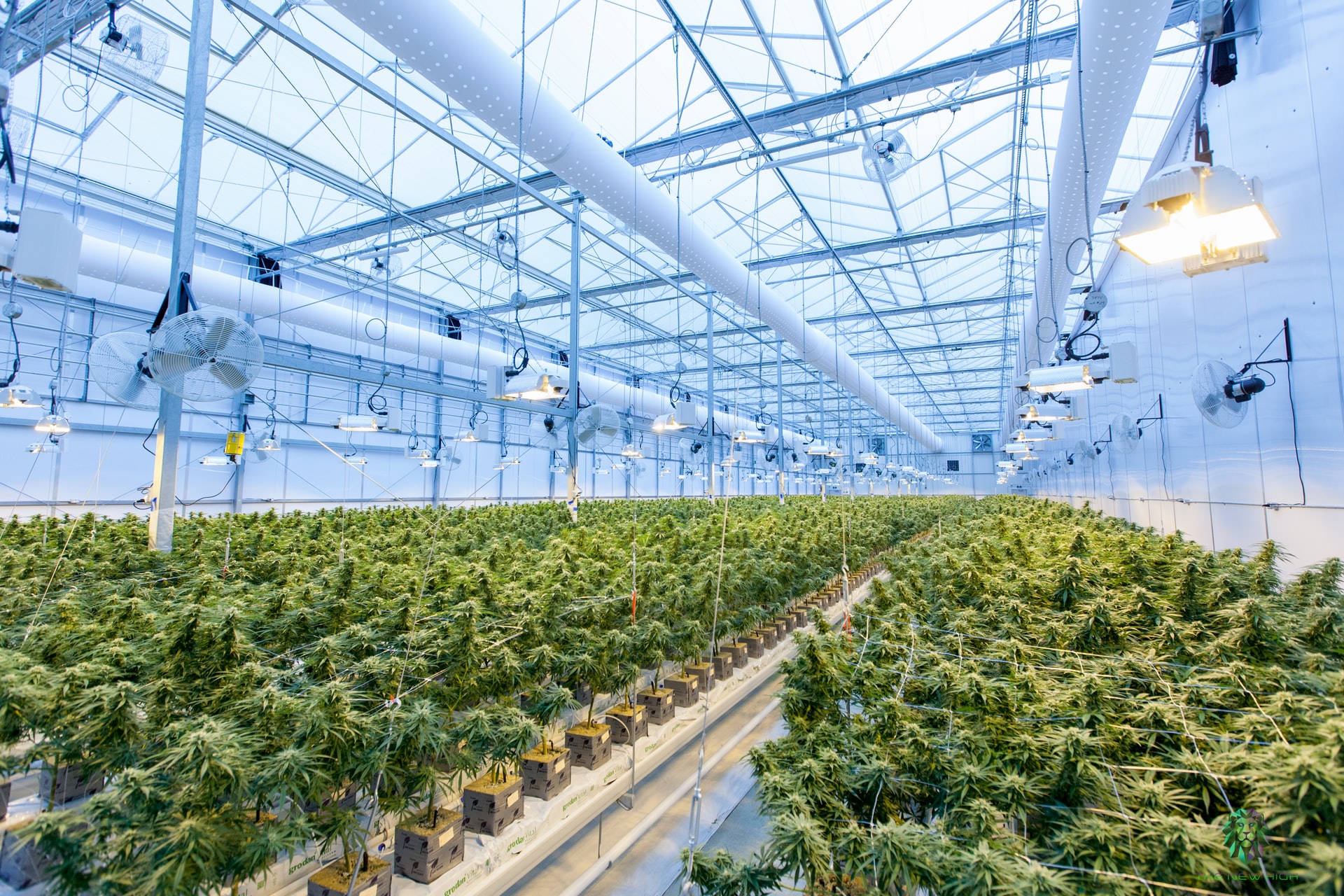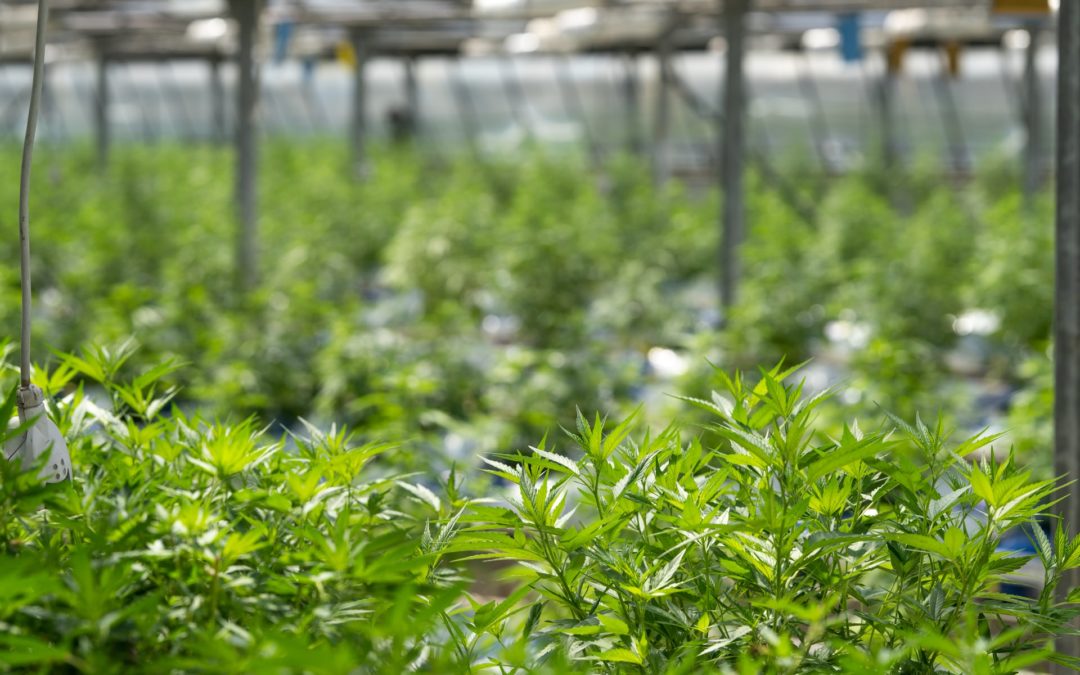It’s easier than ever for commercial cannabis growers to build a thriving cannabis business. One of the biggest expenses for cannabis growers is grow lighting. The average grow light costs anywhere between $300 to $1200 depending on the fixture type, technology, lamp type, bulb expenses, ballast, and other variables.
Such a major expense could quickly turn into a hefty tax write-off if you’re using the best tax rebates and incentives for cannabis grow lights. Thankfully, there are several good tax rebates and incentives available for cannabis growers in 2021 and beyond.
The U.S. government offers an income tax credit for light-emitting diode (LED) or other high-efficiency lighting fixtures. Qualified businesses can deduct up to $25,000 per year in qualifying equipment purchases and installation from their taxes. For those who prefer a more hands-on approach – say you’re establishing your cannabis business in a newly regulated U.S. state – it may be in your best interests to look at standalone tax rebates or incentives that are now open to you with the new regulation. Here are a handful of tax rebates and incentives you may want to consider for your cannabis business.
The 179D Energy Efficient Tax Deduction for Commercial Buildings
In many cases, commercial growers are eligible to claim up to $500,000 in expenses towards their business under Section 179 of the Internal Revenue Code. A specific subset of Section 179 is what’s called 179D or simply referred to as the 179D Energy Efficient Tax Deduction for Commercial Buildings.
The 179D deduction specifically covers energy-efficient improvements to commercial buildings and incentivizes the installation of renewable heating, cooling, or electricity generation systems. This tax incentive is to help businesses that are looking for ways to be more environmentally friendly and energy-efficient, but it’s also helpful for cannabis growers with regards to their lighting systems.
To qualify for this tax deduction you must be in a trade or business that installs these types of technologies on their property with proper certification from an accredited third-party agency like BPI (Building Performance Institute). Cannabis businesses, specifically growers, must be mindful that renting or leasing your building means you’re likely not eligible for the 179D Energy Efficient Tax Deduction for Commercial Buildings.
The tax incentive for renewable systems is 15% of the system cost up to $500,000. You must use a general contractor or electrical contractor who is C-TPAT (Customs Trade Partnership Against Terrorism) certified or be able to provide an equivalent certification to make sure you’re not hiring someone who could pose security risks. This tax incentive only applies if you’re a small business owner and involves a solid application process. However, don’t let that deter you from applying.
The 179D Energy Efficient Tax Deduction for Commercial Buildings was set to expire in 2020 before the U.S. Congress voted to permanently extend the deduction. Also, the 179D deduction was expanded to include projects completed between 2018-2020.
Our BizReps team understands how to navigate the 179D application process to help you cut through any ‘red tape’ and get the funding you need to offset most, if not all of the costs of your system installation, material costs, and other expenses if you qualify for the 179D. Talk with our team about the 179D application process.
Related Article: HPS versus LED versus CMH: Which Grow Lighting Is Best for Cannabis Businesses?

Modified Accelerated Cost Recovery System (MACRS)
Another great tax incentive to help offset grow lighting costs for cannabis growers is the Modified Accelerated Cost Recovery System or MACRS. The U.S. federal government created the Modified Accelerated Cost Recovery System to help businesses recover capital investments more quickly by spreading out the depreciation costs over a shorter period of time.
Cannabis growers can use the Modified Accelerated Cost Recovery System to deduct a greater amount of their capital investments in Year One. This will help you take advantage of more tax incentives and rebates sooner, rather than later. While you may not see the payoffs within the first year, you will realize the depreciation benefits stacking up over the next few years.
This tax incentive for cannabis grow lights goes hand in hand with other incentives that make it easier and less costly for growers to switch from traditional grow lighting, such as HPS, to more energy-efficient grow lighting, such as the gGRO™ CMH hybrid grow light with full-spectrum lighting.
Further tax incentives for the purchase of cannabis grow lights are available to growers in states with legalized marijuana. Based on recent legislation proposed by Congress, we fully anticipate the U.S. government to legalize cannabis on a federal level in the next 12 months, if not sooner.
In addition, the federal government offers a tax rebate equal to 30% on qualified energy-efficient lighting equipment and installation services. That is a great assist for growers who are more concerned with the upfront costs, specifically installation. Growers who have installed high-efficiency grow lights or CMH light fixtures can qualify for this incentive if they qualify for the tax credit.
In the meantime, HID lights are still a viable option for growers to use, and they offer an additional 30% tax deduction on qualified lighting fixtures and installation services if you itemize your deductions with IRS Form 8949 (Sales of Business Property). The key is choosing lamps that are designed for electronic ballasts or magnetic-electronic ballasts.
The 30% Solar Investment Tax Credit (ITC)
The Solar ITC (Investment Tax Credit) is another tax incentive relates to qualified lighting fixtures and installation. Many grow lights, specifically most HPS and even some LED grow lights, do not necessarily qualify for the Solar ITC based on their ballast type, but there are ways to still qualify for the Solar ITC by installing solar panels.
The 30% Solar ITC is applicable for any qualified solar electric property installed after November 17, 2007 that produces electricity primarily through photovoltaic cells or other means that use natural light to generate electricity. The credit is equal to 30% of your cost basis in the system, hence the 30% in the title.
The tax credit is based on the cost of solar panels and not necessarily their power output, so you can still qualify for the Solar ITC even if your solar system isn’t very powerful. You do need to use a qualified installer, like the ones that our BizReps team personally vet who are certified in installing qualified lighting fixtures and installation.
The Solar ITC qualification process is relatively simple. Our BizReps team knows the exact steps you need to take to complete the Solar ITC form, also known as Form 5695, through the IRS. If you’re not in a position to install your own solar system for your grow business right away, you might qualify for something called ‘net metering’. Net-metered customers have their meter run backward when they produce excess power at their location and give it back to the grid.
One of the major benefits for cannabis growers when it comes to net metering is that you don’t need the hassle of installing qualified lighting fixtures and installation. Simply installing a highly productive system can be a backdoor way of offsetting installation costs. We recommend consulting a certified installer before relying on this possibility for your business.
Related Article: Introducing gGRO: The Future of Cannabis Grow Lighting

Top State-Specific Tax Rebates and Incentives for Cannabis Businesses
There are several state-specific tax rebates and incentives for cannabis businesses when it comes to grow lighting. Now, these legislations may mention LED lighting by name, but the spirit of the legislation is energy usage, namely energy efficiency.
The Sunlight Electric Lighting Incentive Program, administered by the New Mexico Energy, Minerals and Natural Resources Department (EMNRD), provides a rebate of up to 50% off the cost of an energy-efficient lighting installation. This incentive is available for commercial customers who meet eligibility requirements, which include being a property owner or tenant and having at least 50% renewable energy installed (solar panels).
The California Board of Equalization offers two tax incentives for businesses that choose to install lighting fixtures with the use of LED-based bulbs. The first rebate is available for any business installing new lighting systems, while the second rebate is specifically geared toward businesses that install LED bulbs.
In California, the Public Utilities Commission offers a tax credit on up to 50% of qualified solar system costs. The California Energy Commission also provides rebates for businesses installing energy-efficient lighting systems, including CFL and LED-based fixtures.
For the state of Colorado, the State Energy Office offers two rebate programs for businesses installing new lighting systems. The first rebate is a 50% tax credit on the purchase price of LED-based fixtures, while the second program provides rebates equal to 100% of LED fixture installation costs.
In Washington state, certain electric utilities offer tax incentives and/or rebates for businesses who elect to purchase LED-based lighting systems.
As more U.S. states legalize cannabis, we fully expect to add to our database of state-specific tax rebates and incentives. Our BizReps team understands tax rebates and incentives connected to solar and LED lighting. We know exactly what to ask, what details to keep in mind, and how to best position your cannabis business for optimal savings for the future. See how much you can save through BizReps.
How to Qualify for Grow Lighting Tax Rebates as a Cannabis Business
First and foremost, if your cannabis business does not own your own location (building, warehouse, land plot, etc.), you likely do not qualify for many, if any tax rebates or incentives for your grow lighting system. That said, there are still plenty of tax rebates and incentives at the federal, state, county, and municipality levels that do not require you to actually own your grow space.
The first thing to do is make sure that you qualify for the tax credit in your state. As mentioned above, the federal government offers a 30% tax credit on solar installation, but not all states have this incentive available to them. Our BizReps has a unique approach where we combine the FUSION™ solar lighting system from Energybank with the gGRO™ 630W CMH grow light for optimal growth and maximum energy savings and tax rebates.
Our revolutionary approach to optimal energy-efficient grow lighting for cannabis businesses is built with your success in mind. We have a team of certified installers across the U.S. who can help get your new grow lights installed to maximize the output and increase energy savings with tax rebates. Our team of expert installers can do an in-person or virtual business site walk-through, assess what needs are covered by solar lighting systems for maximum efficiency, and provide a list of tax incentives that we believe you may be eligible for in your local area.
The end result? Optimal savings, best possible growth, and most importantly, a growing cannabis business. See how much you can save with BizReps today.
Related Article: What’s the Best Ceramic Metal Halide Lamp for Cannabis Businesses?
For more information on growing cannabis please visit one of the internet’s largest knowlege databases at Cannabis Research A-Z

